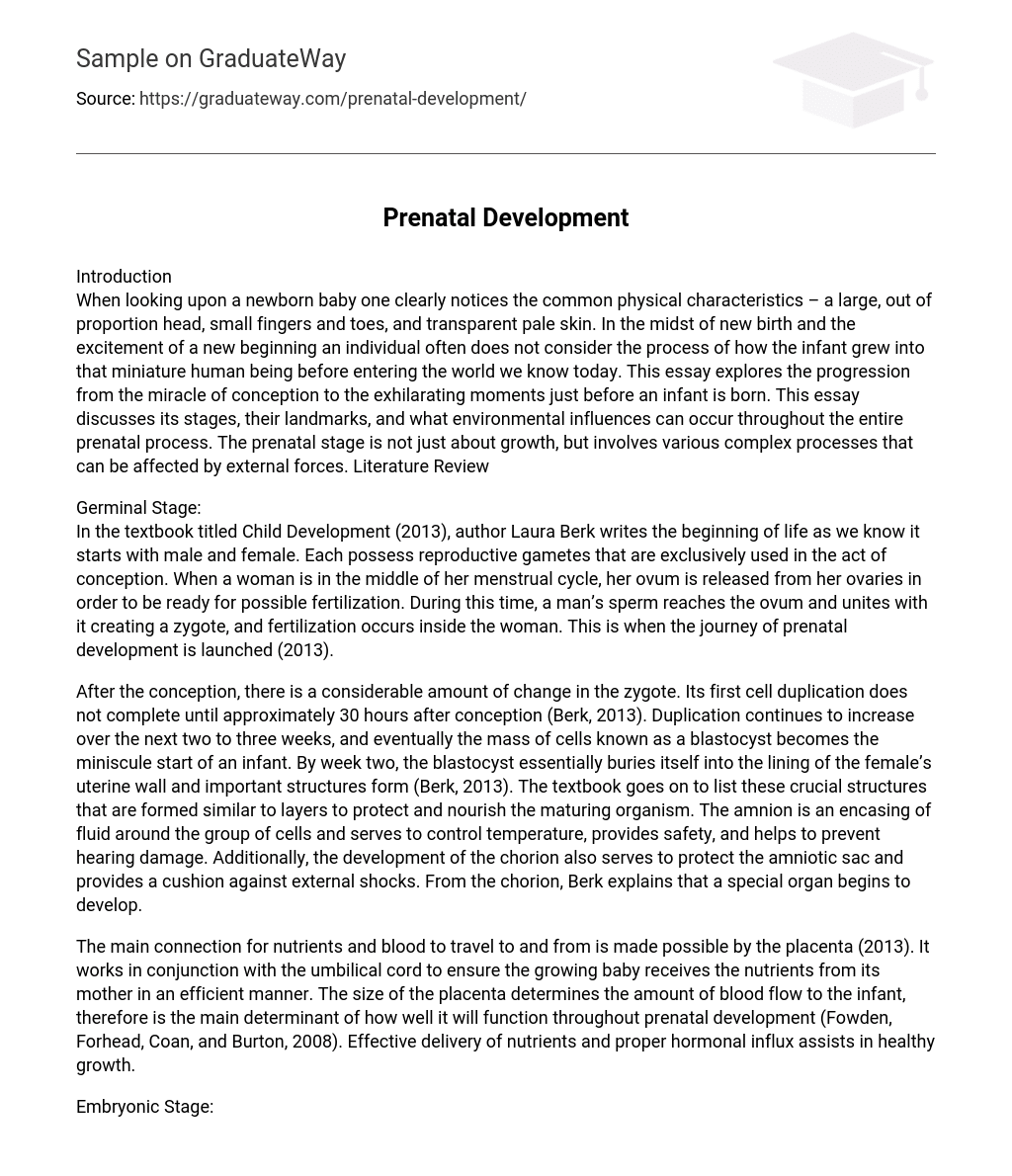Introduction
When looking upon a newborn baby one clearly notices the common physical characteristics – a large, out of proportion head, small fingers and toes, and transparent pale skin. In the midst of new birth and the excitement of a new beginning an individual often does not consider the process of how the infant grew into that miniature human being before entering the world we know today. This essay explores the progression from the miracle of conception to the exhilarating moments just before an infant is born. This essay discusses its stages, their landmarks, and what environmental influences can occur throughout the entire prenatal process. The prenatal stage is not just about growth, but involves various complex processes that can be affected by external forces. Literature Review
Germinal Stage:
In the textbook titled Child Development (2013), author Laura Berk writes the beginning of life as we know it starts with male and female. Each possess reproductive gametes that are exclusively used in the act of conception. When a woman is in the middle of her menstrual cycle, her ovum is released from her ovaries in order to be ready for possible fertilization. During this time, a man’s sperm reaches the ovum and unites with it creating a zygote, and fertilization occurs inside the woman. This is when the journey of prenatal development is launched (2013).
After the conception, there is a considerable amount of change in the zygote. Its first cell duplication does not complete until approximately 30 hours after conception (Berk, 2013). Duplication continues to increase over the next two to three weeks, and eventually the mass of cells known as a blastocyst becomes the miniscule start of an infant. By week two, the blastocyst essentially buries itself into the lining of the female’s uterine wall and important structures form (Berk, 2013). The textbook goes on to list these crucial structures that are formed similar to layers to protect and nourish the maturing organism. The amnion is an encasing of fluid around the group of cells and serves to control temperature, provides safety, and helps to prevent hearing damage. Additionally, the development of the chorion also serves to protect the amniotic sac and provides a cushion against external shocks. From the chorion, Berk explains that a special organ begins to develop.
The main connection for nutrients and blood to travel to and from is made possible by the placenta (2013). It works in conjunction with the umbilical cord to ensure the growing baby receives the nutrients from its mother in an efficient manner. The size of the placenta determines the amount of blood flow to the infant, therefore is the main determinant of how well it will function throughout prenatal development (Fowden, Forhead, Coan, and Burton, 2008). Effective delivery of nutrients and proper hormonal influx assists in healthy growth.
Embryonic Stage:





